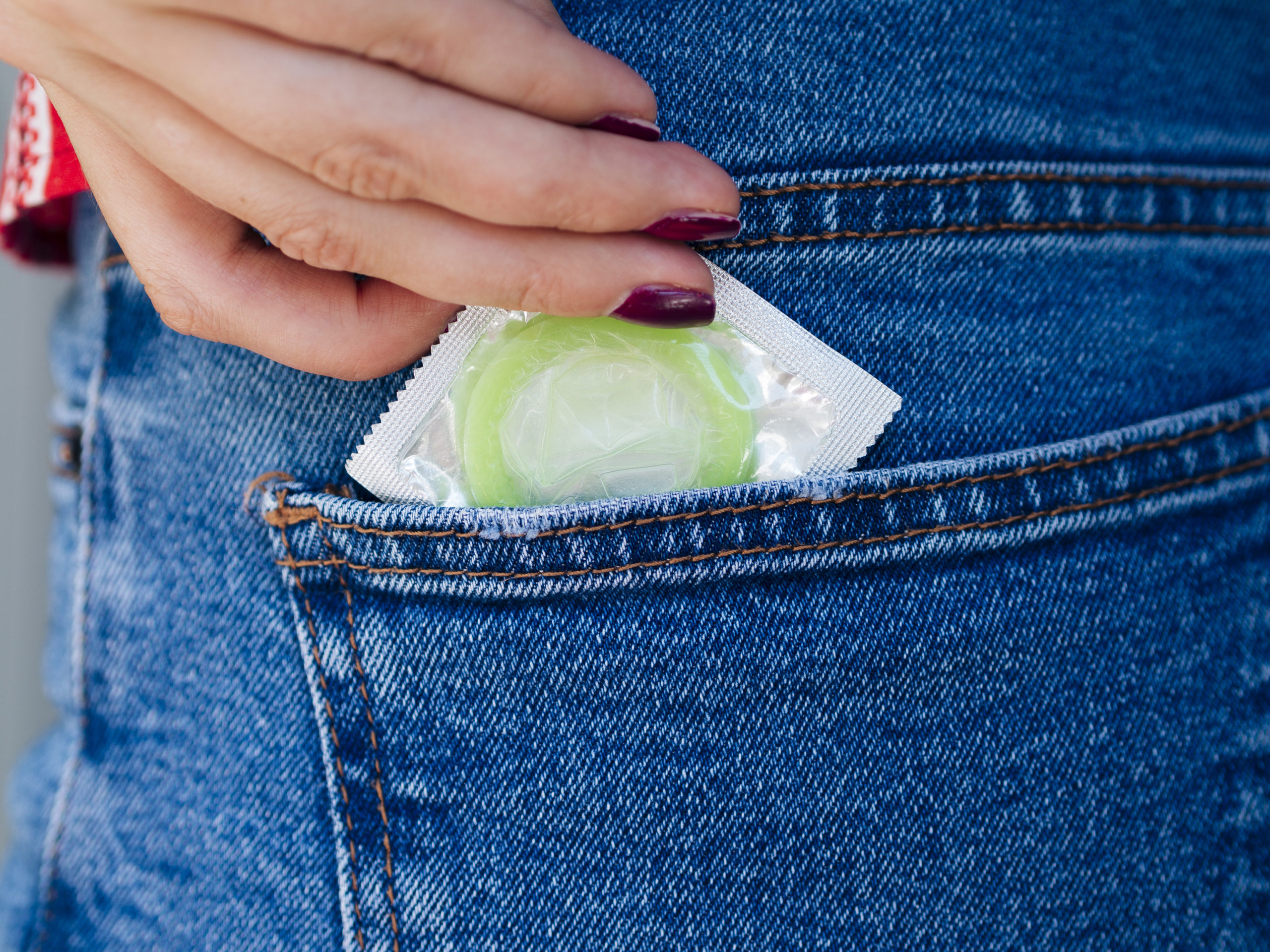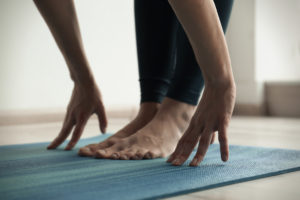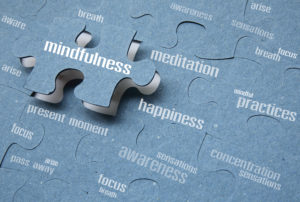 After what felt like a never-ending winter, Buffalo has enjoyed beautiful weather so far this summer! Outdoor activities with family and friends are a safe way to adhere to social distancing, while exploring the most scenic sites in Buffalo. The region has countless hiking trails and many beautiful creeks. Additionally, Western New York is home to some incredible wildlife, including deer, foxes, hawks, and bald eagles.
After what felt like a never-ending winter, Buffalo has enjoyed beautiful weather so far this summer! Outdoor activities with family and friends are a safe way to adhere to social distancing, while exploring the most scenic sites in Buffalo. The region has countless hiking trails and many beautiful creeks. Additionally, Western New York is home to some incredible wildlife, including deer, foxes, hawks, and bald eagles.
Here is our list of the best nature-related day trips within an hour’s drive from Buffalo.
- Chestnut Ridge Park
One of Erie County’s best attributes, Chestnut Ridge Park is located about a half hour outside of Buffalo—just past Orchard Park. This huge park offers beautiful scenery for hiking, biking, or even driving. The park includes picnic areas and tennis courts.
- Eternal Flame Falls at Chestnut Ridge Park
This interesting natural phenomenon is tucked away off the beat and path in Chestnut Ridge Park. The waterfall contains a natural gas spring with a flame that can reach four to eight inches. The best time to see the falls at full water capacity is during the spring, after plenty of rain. However, the half-mile hike is scenic and can also be an enjoyable outing in the dry season.
- Tifft Nature Preserve
This urban-adjacent gem is located only five minutes from downtown Buffalo on the Outer Harbor. Tifft is a massive 264-acre preserve with five miles of trails and boardwalks. The facilities offer fishing and guided tours. Additionally, Tifft is an ideal spot for photographers, as it’s designated as an ‘important bird area’ by the Audubon Society. Many at-risk species, including bald eagles, red-shouldered hawks, and short-eared owls can be found among the 265 bird species at the preserve.
- Eighteen Mile Creek
If you are looking for a less urban/more remote option, check out Eighteen Mile Creek in Hamburg. This 466-acre undeveloped park offers vast hiking trails with fishing and wildlife viewing. Parking near South Creek Road leads to a trailhead that continues along the rim of the creek for about five miles.
- Reinstein Woods Nature Preserve
Located in the suburb of Depew, this unique 292-acre complex offers lush forests, ponds, and wetlands. Popular walking trails include the Lily Pond Loop where visitors can see ducks, geese, turtles and other aquatic wildlife, and the Beech Tree Trail that takes visitors through a beech-maple forest. Many native species of wildlife to Western New York, including white-tailed deer, beavers, waterfowl, red-tailed hawks, pileated woodpeckers and blue herons, can be found here.
- Knox Farm State Park
Those looking for more than just hiking and fishing, should check out the biking and equestrian trails at Knox. This state park occupies the former estate of the Knox family near the idyllic village of East Aurora.
More

Millions of American’s are infected with sexually transmitted diseases (STDs) every year. STDs are passed from person to person through intimate physical contact, including vaginal, oral, and/or anal sex. Many STDs show no signs or symptoms (known as asymptomatic), however, even with no symptoms, the infection can be passed to sexual partners. Therefore, STD testing should be conducted regularly for anyone sexually active.
Types, Symptoms, and Treatments
Chlamydia
As the most commonly reported STD in the U.S., chlamydia is a bacterial infection of the genital tract spread through vaginal, oral or anal sex. It can be hard to detect because not all women have symptoms. When present, symptoms are usually mild and may include pain when urinating, vaginal discharge, lower abdominal pain, and bleeding between periods.
Treatment: chlamydia can be easily cured with antibiotics.
Gonorrhea
Another bacterial infection in the genital tract, gonorrhea can also grow in your mouth, throat, eyes, and anus. Symptoms can start as early as 10 days after exposure, but many people will not experience symptoms for months. Symptoms may include a thick vaginal discharge, heavy bleeding during or between periods, pain when urinating or during bowel movements, and anal itching.
Treatment: gonorrhea can be cured with prescribed medications.
Syphilis
Another bacterial infection, syphilis affects the genitals, skin and mucous membranes, but it can also involve other parts of your body, including the brain and heart. Symptoms occur in three stages, with early signs being a small painless sore at the sight of infection. As symptoms progress, they may include penny-sized sores, fever, fatigue, soreness, and enlarged lymph nodes. If untreated, syphilis can lead to blindness, paralysis, dementia, and numbness.
Treatment: Syphilis can be cured with the right antibiotics, however, treatment will not undo any damage that the infection has already caused.
Trichomoniasis
This common STD is caused by a microscopic, one-celled parasite. Symptoms typically occur in five to 28 days of exposure and range from mild to severe. Symptoms may include clear or cloudy vaginal discharge, vaginal order or itching, and pain when urinating.
Treatment: trichomoniasis can be cured with a single dose of antibiotics.
Human papillomavirus (HPV)
Most sexually active people will get HPV at some point in their lives. HPV puts women at higher risk of cervical cancer. There are more than 100 strains of HPV and many do not cause symptoms, however, certain strains will cause genital warts.
Treatment: There is no treatment for the virus itself, but there are treatments for health problems caused by HPV. Additionally, there is a safe and effective vaccination to protect against HPV that is recommended for anyone 11 years or older.
Hepatitis
Hepatitis A, B, and C are contagious viral infections that affect the liver, however, hepatitis B and C are more serious. Not all people will develop symptoms, but those that do may experience fatigue, nausea, abdominal pain, fever, muscle pain, itching, loss of appetite, or jaundice.
Treatment: hepatitis A and B often go away within four to eight weeks on their own. New drugs are being used to treat and possibly cure hepatitis C.
Genital Herpes (HSV)
A highly contagious STD caused by a type of the herpes simplex virus (HSV). HSV enters the body through small breaks in the skin or mucous membranes. Signs and symptoms are very mild and frequently go unnoticed, so many people with HSV never know they have it.
Treatment: While there is no cure for herpes, medication can reduce symptoms and make it less likely to spread to others.
HIV
An infection with the human immunodeficiency virus, HIV interferes with the body’s ability to fight off viruses, bacteria, and fungi that cause illness. It can lead to AIDS, a chronic, life-threatening disease. Early symptoms may include headache, fever, sore throat, swollen lymph glands, and fatigue.
Treatment: There is no cure, but treatment will help to prevent complications and spreading.
Takeaway
As shown above, some STDs can be “easily” cured in a simple dosage of antibiotics, while others cannot be cured. The safest measure is to use protection in the form of latex condoms. Adults in monogamous relationships should have both partners checked for STDs before considering unprotected intercourse. Lastly, have all young adults 11 to 26 vaccinated against HPV.
More
Technology usage is increasingly becoming a constant in our lives, as screen time is linked to our jobs and seen as a form of entertainment. However, it is important to stay educated on the negative effects constant interaction with electronic devices has and to take steps to decrease that time—both for adults and for children.
Adults
Though there is no rule on how many hours a day adults should be using screens, be that a laptop or computer, phone, tablet, or TV, we do know that adults spend an average of 11 hours a day in front of a screen—for professional and personal reasons. Negative effects of this include headaches and eye strain, as well as neck, back, and shoulder pain. Excessive use of laptops and computers also leads to tendonitis and carpal tunnel syndrome. Overall, it may contribute to a sedentary lifestyle and social media addiction, in addition to negatively affecting sleep patterns and possibly leading to insomnia.
In efforts to make our interactions with screens healthier, it is recommended that we be mindful of our posture when we are using them for prolonged periods of time. Additionally, a good idea is to learn some chair yoga poses to keep muscles loose, while taking stretching and standing breaks at least once every hour. To limit eye strain, we should look away from the screen, focusing on a distant object for about 20 seconds every 20 minutes. Eating in front of a screen is discouraged, and it is recommended we avoid use of a backlit screen for at least an hour before bed.
Children
Unlike adults, the screen time children are exposed to should be heavily regulated and very limited. Other than video chatting, children less than 18 months old should get no screen time at all. After that age, for children two to five years old should be limited to screen time of one hour a day and it should always be supervised for interaction and content. You can make use of regulatory apps that prevent children from accessing certain contents and may also lock the screen after a certain amount of time. It is important that children make use of electronic devices when supervised and that they are accessing virtual environments that include high-quality content and educational materials that prompt them to cognitively engage with the content on the screen.
Too much screen time for children, as well as poor quality screen time, has been linked to obesity, behavioral problems, loss of sleep or irregular sleep patterns, loss of social skills, and less time to play. Make sure you do not allow TVs or laptops in the children’s bedrooms, and you keep them away from screens at least an hour before bedtime. It is also a good idea to prioritize unplugged, unstructured play time and set rules and limits on when and where screens can be used. This is more likely to teach your children digital literacy and set boundaries between online and offline interactions.
More

With the roaring 2020s just around the corner, it’s time to think about facing the new year with less stress. Most likely, some of your new year’s resolutions include taking better care of your body and maintaining your well-being. A lot of people manage stress, anxiety, and day-to-day challenges through exercise, and yoga is one form of exercise that gains more and more popularity—especially since it can be done either in a studio or at home, with company or individually.
Yoga can help with a variety of health issues, and different yoga poses are known to help heal different pains, whether those are physical or emotional.
Stress Relief
Like many forms of exercise, yoga can help ease day-to-day stress and contribute to a more relaxed state of being. It helps us bring our attention back to our bodies and focuses the mind and breath on what parts of it are experiencing tension and pain.
- Forward fold/bend: A forward fold essentially looks like bending over to touch your toes. This pose helps the body release tension so that you are better prepared to relax. It also allows the upper back to stretch and release tightness in the neck and shoulders.
- Standing forward fold with shoulder opener: This pose looks the same as a forward fold, but also incorporates your arms stretched behind you in an upward pull. In addition to increasing exhalation, shoulder openers help the body concentrate on the pose and reduce stressful thoughts. This pose helps release shoulder tension and relax the hamstrings.
- Side stretch: A relatively easy pose, a side stretch can be done on both sides of the body, helping to release the neck, head, and shoulders muscle tension.
Balancing Emotions
Just as it helps relieve stress, yoga can help us process our emotions and let go of emotional tensions we have been holding in our bodies.
- Tree pose: With a firm stance on the ground, this pose is accomplished by lifting and placing your foot either on your inner thigh or calf (being careful to avoid the knee area). Intended to stretch your upper body, while you raise your hands above your head and breathe into your heart space. The purpose is to ground yourself and embody the stability that comes with situating your roots into the earth.
- Warrior II: With the tree pose having brought attention to your heart space, the warrior II helps you realize the extent of your inner power that comes from your heart space. Drawing 20 to 25 breaths in this pose, you can focus on drawing strength and confidence into yourself.
Dealing with Pain
A combination of gentle yoga poses with conscious breathing techniques can help augment relaxation response, especially if used in restorative yoga which is meant to help heal deeper pain and allow the body to experience a pose for a longer period of time.
- Nesting pose: To find this pose, lay on your side, legs bent and drawn in toward your belly. This pose is recommended if you have trouble sleeping or are suffering from insomnia, as it creates a sense of security and nurturing. Focus on the natural rhythm of your breath, observing how the breaths move in and out of your body, creating a secure pattern.
- Supported backbend pose: This heart-opening pose is done by laying on your back with your legs bent. The key is to put a bolster under your upper back to releases chronic tension in the back and shoulders, working to undo the stress placed on our bodies from working at a desk, a computer, or driving. It improves the flow of the breath from the upper chest to the heart and rib cage, down to the belly.
- Seated forward fold: Done in a seating position, it’s best to use a bolster to let your upper body meltdown as you reach for your feet. According to the information given by QC Kinetix (Bradenton), our daily activities place a lot of stress and pain on the spine, not only on the shoulders and neck. This pose helps relax the hips and the back allowing it, as well as your chest and belly, to expand and contract with each breath you take.
While this list is far from exhaustive, it’s meant to provide a basic understanding of the benefits of yoga. The best way to get involved is to seek out a local class or begin practices the fundamentals of yoga (basic poses, like the ones above) through videos online.
More
 Most office jobs require you to spend an average of eight hours a day working at a desk or being relatively immobile. With the exception of lunch time, maybe you don’t even realize how long you’ve been sitting down until it’s time to clock out and commute back home. Being seated for long hours at a time and facing the stress of the workplace is less than ideal, but you have options to integrate healthy habits into your workday.
Most office jobs require you to spend an average of eight hours a day working at a desk or being relatively immobile. With the exception of lunch time, maybe you don’t even realize how long you’ve been sitting down until it’s time to clock out and commute back home. Being seated for long hours at a time and facing the stress of the workplace is less than ideal, but you have options to integrate healthy habits into your workday.
Here are some simple habits you can incorporate into your workday to ease stress and contribute to your overall health:
- Taking short breaks: Though it is easy to stay in the zone when working—and it actually feels productive—it is important to take short breaks throughout the day. They help you take your attention away from your computer screen and recharge your brain. Your concentration becomes better, and you are forced to change your posture just by getting up, stretching and walking around for a few minutes. Experts suggest taking a five-minute break every hour.
- Drink water: While it might seem obvious that we should be drinking water, hydration is also an easy way to energize you during a long day at work, and effectively provide you with much-needed hydration that can help you focus better.
- Eat healthy: In addition to saving money, bringing your own lunch to work means you have the choice to eat something healthy, as well as something different every day. You should make nutritious food choices and avoid the easy way out—ordering in or take-out. Opt for whole grains and lean proteins with a side of fruit or veggies. The same applies to your breakfast: you need energy to go through the day, so choose a well-balanced breakfast that will provide you with the right nutrients until it’s time for lunch.
- Improve your posture: It is easy at most office jobs to slouch down your chair or be hunched over your desk. Such postures, however, put strain on your muscles especially if they are used for a long period of time. Be attentive to how you are sitting, invest in some good furniture that provides you with back and neck support—or get equipped with a back-support cushion, a foot rest, a foam cushion for your wrists or even a laptop riser so it is on eye level. If in doubt, ask your work if they can provide an ergonomic evaluation of your workspace to help you get in proper alignment.
- Get to work early: Even though it may seem like you are working extra time, getting to work early can actually make your day less stressful. It gives you time to start the day without jumping head-first into the work you need to do, and it provides you with the opportunity to also socialize with your co-workers. After all, you are probably in the same boat, so why not build community?
More

When does it happen?
Menopause symptoms occur at the end of the body’s menstrual cycles, usually when women reach their 40s or 50s; perimenopause begins a few years before menopause. Some women may experience menopause as late as their 60s. The average age in the US is 51 and the most common reason is the natural biological decline of reproductive hormones. Menopausal age varies and procedures such as chemotherapy and/or radiation, hysterectomy, or primary ovarian insufficiency can lead to early menopause.
Perimenopause Symptoms
Experiencing the following, additionally to irregular periods, alerts you that your body is in perimenopause:
- Vaginal dryness and irritation
- Hot flashes and chills
- Night sweats
- Problems sleeping
- Mood changes
- Slowed metabolism and weight gain
- Thinning hair and dry skin
- Loss of breast fullness
- Thin bones
Period irregularity does not guarantee you are in menopause, so until you are sure do not stop using contraceptive methods. Your ovaries are still producing eggs, even though your hormone levels are changing.
Menopause
Leading up to menopause, you will experience changes in menstruation, with period irregularity that includes either heavier periods or periods that skip for a month or more than return regularly for a few months. Once you have gone 12 months without menstruating, your body has gone into menopause.
Treatment
There are different types of treatment available to ease menopausal symptoms.
Menopause hormone therapy (MHT) is one of the most common treatments, though it is not safe for all women. You should always consult your healthcare provider, and avoid MHT if:
- You think you are pregnant
- You have had certain types of cancer, blood clots, a stroke or heart attack
- You have liver disease or problems with vaginal bleeding
Non-hormone treatments approved by the FDA are also an option, especially when it comes to easing the symptoms of severe hot flashes and pain with sexual activity (dyspareunia).
Natural methods such as dietary supplements or over-the-counter natural hormone creams may be used to alleviate some menopausal symptoms.
Every treatment method has advantages and disadvantages, and there is no one-fits-all solution to dealing with menopause. Always consult your healthcare provider before pursuing treatment and be knowledgeable about potential risks.
After Menopause
Some of the symptoms may continue after menopause, such as vaginal dryness and changes in sex drive; seek methods that will help you protect your heart and prevent bone loss. Postmenopausal vaginal bleeding should not occur, and if it does it may be a sign of a medical issue that requires urgent attention.
More

Body image issues are pervasive in today’s society. Approximately 91% of women are unhappy with their bodies, while only 5% of women naturally have the supposedly “ideal” body type as portrayed in the media. A negative body image in young adults can lead to many adverse effects, such as anxiety, depression, and eating disorders.
It is especially important to reach out to young adults regarding a healthy body image, as 95% of people with eating disorders are between the ages of 12 and 25. Additionally, it is crucial to keep in mind that body image issues do not only affect women and girls, despite common stereotypes. Research suggests that 10% of people treated for eating disorders are male.
In teenagers and young adults, there are many causes of body image issues. The list below, while certainly not exhaustive, contains some of the most common factors in the development of a negative body image.
- Natural weight gain and body changes due to puberty
- Peer pressure/negative friend group
- Cultural differences and expectations
- Unreasonable body image expectations from media images, celebrities, etc.
- Family members or trusted adults who are overly concerned with their own weight or appearance or their teen’s weight or appearance
- Exposure to material that sexualizes young people
In encouraging positive body image, the most important component is encouraging and open communication regarding changing bodies and outside influences. You can’t completely control the messages that young women are exposed to on a daily basis, but you can help them process and deconstruct these messages in a healthy manner.
Tips for encouraging positive body image in teens and young adults:
- Set a positive body image example: Young women look up to the trusted adults in their lives to model appropriate behavior and expectations. Be mindful of the language that you use regarding your own body and avoid criticizing others’ bodies.
- Communicate about puberty and body changes: Puberty is a confusing time for any teen to navigate, especially when dealing with seemingly random and rapid changes in their mental, emotional, and physical states. As a parent, teacher, or other trusted adult, you can help your teen deal with this difficult experience with open and honest communication regarding what to expect and how to process it, especially reassuring them that they are not alone and that what they are going through is completely normal.
- Encourage positive friendships: Help the young women in your life build an accepting and caring friend group. Teenagers are heavily influenced by their peers, so while you cannot (and should not) choose their friends for them, you can encourage them to gravitate towards people who share their values and goals.
- Foster healthy habits rather than a certain body type: Instead of focusing on a certain ideal weight or body size, encourage your teen to choose healthy foods that make them feel good and are also tasty.
- Discuss media and cultural messages: Encourage your teen to question messages from social media, the Internet, television, etc., especially regarding body pressures.
- Praise achievements: Compliment teenagers on their achievements, efforts, and skills, rather than appearance.
- Promote enjoyable physical activity: Help your teen to find enjoyable physical activities. Make exercise about fun and feeling good rather than achieving a certain body type.
More
 Stress is one of modern life’s biggest obstacles. While the amount of stress varies from person to person, day to day, and month to month, more than two-thirds of people feel stress on a daily basis. Dealing with stress can lead to issues at work, school, and home. Combating stress depends on trying practices, including exercise, diet, mindfulness, and relaxation, to find what combination of stress reduction techniques works for you.
Stress is one of modern life’s biggest obstacles. While the amount of stress varies from person to person, day to day, and month to month, more than two-thirds of people feel stress on a daily basis. Dealing with stress can lead to issues at work, school, and home. Combating stress depends on trying practices, including exercise, diet, mindfulness, and relaxation, to find what combination of stress reduction techniques works for you.
Ways to combat stress:
- Exercise: Yes, get moving! Moderate exercise, such as walking, cycling, vinyasa yoga, swimming, and jogging, are great activities to relieve mental stress. In addition to releasing endorphins that lead to enhanced moods, exercise lowers stress hormones, improves sleep, and leads to more confidence and a better wellbeing. Women should get 150 minutes of moderate exercise each week, which averages to 30 minutes five days a week. Mixing up the activities with yoga one day, swimming the next, and lunch-break walks will help keep it interesting.
- Diet: Certain foods, especially foods high in sugar, lead to the release of stress hormones from the adrenal glands. While the thought of dieting is enough to cause stress, rest assured, small practices can make a big impact on eating. The key is to avoid lofty eating plans and goals, and instead start small and aim for long-term changes. If you typically eat one or two servings of fruit and veggies each day, make a plan to double it. Work on building up to a goal of five servings of fruits and veggies daily. In addition, choose lean protein options (chicken, fish, beans) and avoid fatty foods, processed foods, and red meats. Working to lower sugar and caffeine intake will also help with stress reduction.
- Mindfulness: Learning to be in the moment and accept your current situation is another method to reduce stress. Practicing mindfulness means dedicating time to meditate. An easy way to start is by dedicating five minutes of quiet time to sit and think each day. During this time, listen to your breath, scan your body, find any discomfort (stress often manifests in pain or tension in the neck and shoulders), and let it go. Practicing mindfulness means moving your mind through examining, accepting, and dismissing both mental and physical feelings. For a guided mindfulness practices, look for meditation and/or gentle yoga, all of which can be found in phone apps, online videos, and in-person at local yoga studios.
- Relaxation: In addition to exercise, diet, and mindfulness, which can feel like work, simply look for ways to relax. This is different for everyone, but can include a hot bath, spending time in nature, using aromatherapy candles or oils, reading, getting a massage or pedicure, listening to music, and/or simply taking time to yourself.
More
 The holiday season can be a wonderful time of the year to enjoy with your family and friends. The list of events often appears endless: work parties, school events, and big family dinners, to name a few. In between all the formal engagements comes shopping, cleaning, cooking, baking, planning, and scheduling. It’s easy to get lost in the details and miss actually enjoying yourself. Here are a few ways to keep calm this December.
The holiday season can be a wonderful time of the year to enjoy with your family and friends. The list of events often appears endless: work parties, school events, and big family dinners, to name a few. In between all the formal engagements comes shopping, cleaning, cooking, baking, planning, and scheduling. It’s easy to get lost in the details and miss actually enjoying yourself. Here are a few ways to keep calm this December.
- Slow down! While it’s easier said than done, especially with the aforementioned list of holiday duties, take time to enjoy yourself and your loved ones. Shift your focus from relying on drawing gratitude from material goods and work on loving the time you get to spend with your family. Look for ways to prioritize memories!
- It’s okay to say, no! With so much pressure to be a million places, buy a ton of gifts, and make endless batches of cookies and brownies, it can easily lead to exhaustion. Instead of agreeing to every holiday request, look for a way to balance the plans. Try to incorporate self-care into the mix. It’s okay to send bought cookies to your child’s school function and it’s okay to say no to events if you are already booked up.
- Find help by working with friends. When you can’t say no, look for ways to combine forces with a friend or another mom in the community. Odds are your friends, especially other moms, will also be stretched thin. Carpooling, baking parties, and holiday meal prep gatherings can help spread out your load.
- Look for ways to include your kiddos in the plans. While this is tricky with small children, kids five and up can certainly lend a hand. By being involved in the cooking, cleaning, and planning of the events, odds are the kids will feel more connected to it. Some ideas include having the kids make holiday cards, wrap presents, set the holiday table settings, or even come up with a holiday variety show act to entertain guests.
- Acknowledge your feelings. Most people feel moments of sadness around the holidays. Whether it’s sadness from a lost loved one, a break up, or even feelings of isolation or loneliness, it’s best to allow yourself to accept the feeling. It’s okay to take some time to be sad or to cry. Feel it and work to move on. If having trouble with the feelings, then reach out for help. Look for local social, religious, or community organizations that can help you deal with the emotion.
- Stick to a plan! One of the best ways to navigate the holidays is to plan your activities in advance. This will help you stay organized and be less stressed overall. While using a calendar to plan activities is a no brainer, also make lists of what needs to be done (cooking/shopping/cleaning) and lists of items you plan to purchase.
- Lastly, take a break! If you find yourself feeling stressed in the moment, try taking a 10- or 15-minute break to clear your mind. Some ideas include a crisp walk around the block to stargaze or look at the neighborhood lights, following a short yoga or guided meditation video online or on your phone, or even simply taking some time to sit in a quiet room with music on. Do your best to enjoy this wonderful time of year.
More
 All moms of young children can attest that there’s not enough time in the day. Between work, committees, shuttling kids to activities, and putting a meal on the table, there usually isn’t much time left. Here are some tips for saving time on busy weeknights.
All moms of young children can attest that there’s not enough time in the day. Between work, committees, shuttling kids to activities, and putting a meal on the table, there usually isn’t much time left. Here are some tips for saving time on busy weeknights.
Save Time Cooking
- Meal prep for the week. We’ve all heard the term and may have tried it to varying levels. Here’s the key, be sure you are cooking food you actually like and can get your family to eat. There’s nothing worse than making a week’s worth of meals that no one will eat when it comes down to it. Find a handful of easy recipes that you and your family enjoy and rotate through. Easy meals include slow-cooker roasted or shredded chicken with rice, beef stew, and pasta with red sauce. Load up on veggies in the recipe to keep it healthy.
- Prepare lunches on weekends. Dedicate a few hours to chopping veggies/fruit and packing lunches. Fruits like melons, berries, and citrus can be chopped in advance for a week’s worth of enjoyment. Prep healthy snacks in to-go reusable containers, including cheese and crackers, carrots and ranch, bell peppers and hummus, and string cheese and apple. This way, every time you pack lunches for school or work, you won’t be starting from scratch.
- Make large portions. If you know you have more time one night then the next, double up on dinner portions to give yourself a break the next night or have leftovers for lunch.
Get Through Housework Quicker
- Multitask. One of the best times to empty the dishwasher is when waiting for the oven to heat or water to boil. You are already in the kitchen, so put that proximity to work.
- Put the kids to work! If your kids are school age, they can handle household responsibilities. Make a weekly chore chart and have children choose the chores they’d like to help with.
- Organize. An easy way to have a less cluttered house is to invest in storage bins and baskets. It’s easier to train the kids to put stuff away, if there’s a clear and obvious place to put something…yes, the floor seems like a good option to them, but learning to store and care for their own things is a great life lesson.
- Hire out. It may seem like a waste of money, but remember, time is money. Time spend cleaning is time missed with your kiddos. One option: hiring your kids, hopefully at a discount rate, in the form of allowance, but if they are too young, consider a professional. Even just having someone in once per month to deep clean the bathrooms and kitchen will save you plenty of time and backpain!
- Tackle the laundry. While weekends should include time for family fun, see if you can work large laundry loads in, while meal prepping. If you can get a week’s worth of laundry done you’ll save time not only because it will be clean, but also because you can lay out five days of clothes for the kids in neat piles. You can also choose short cycles while doing laundry. Most people choose longer cycles, when in reality, their family’s clothes simply are not very dirty. Choosing a shorter cycle saves time and, even, natural resources, so you are also helping the environment.
Do you have any time savers for busy moms? Share them on our facebook page or comment below. We’d love to hear from you!
More
 After what felt like a never-ending winter, Buffalo has enjoyed beautiful weather so far this summer! Outdoor activities with family and friends are a safe way to adhere to social distancing, while exploring the most scenic sites in Buffalo. The region has countless hiking trails and many beautiful creeks. Additionally, Western New York is home to some incredible wildlife, including deer, foxes, hawks, and bald eagles.
After what felt like a never-ending winter, Buffalo has enjoyed beautiful weather so far this summer! Outdoor activities with family and friends are a safe way to adhere to social distancing, while exploring the most scenic sites in Buffalo. The region has countless hiking trails and many beautiful creeks. Additionally, Western New York is home to some incredible wildlife, including deer, foxes, hawks, and bald eagles.







 The holiday season can be a wonderful time of the year to enjoy with your family and friends. The list of events often appears endless: work parties, school events, and big family dinners, to name a few. In between all the formal engagements comes shopping, cleaning, cooking, baking, planning, and scheduling. It’s easy to get lost in the details and miss actually enjoying yourself. Here are a few ways to keep calm this December.
The holiday season can be a wonderful time of the year to enjoy with your family and friends. The list of events often appears endless: work parties, school events, and big family dinners, to name a few. In between all the formal engagements comes shopping, cleaning, cooking, baking, planning, and scheduling. It’s easy to get lost in the details and miss actually enjoying yourself. Here are a few ways to keep calm this December. All moms of young children can attest that there’s not enough time in the day. Between
All moms of young children can attest that there’s not enough time in the day. Between